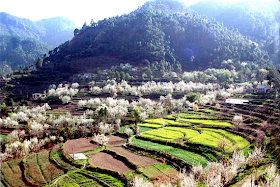HISTORY OF THE SPANISH EMPIRE

New European empires: 16th century AD
Since the fall of Rome, there has been no empire based in Europe which extends outside the continent. This situation changes abruptly in the 16th century, when Spain and Portugal become the pioneers in a new era of colonization.
The Iberian peninsula is well poised at the time for this leap into the unknown.
In their great voyages of discovery, in the 15th century, the Portuguese have developed ocean-going skills which are eagerly copied by their Spanish neighbours. Spain's internal conflicts of recent centuries have recently been resolved with the union of Castile and Aragon and then, in 1492, the conquest of Granada.
Two voyages in the 1490s lay the foundations for the future empires. Columbus, sailing west for Spain, stumbles upon America in 1492. Vasco da Gama, adventuring south and east for Portugal, reaches India in 1498.

Spaniards in a new world: 16th century AD
The half century after Columbus's voyage sees a frenzy of activity in the new world (part exploration, part conquest, part colonization) as the Spanish scramble and struggle to make the most of their unexpected new opportunities.
By 1506 the entire continental shore of the Caribbean Sea has been explored from Honduras to the mouth of the Orinoco. Known at first as Tierra Firme (a phrase applied to the isthmus of Panama), it is believed to be part of the coast of Asia - until Vespucci's furthest journey south gives him a different impression, which becomes gradually accept.......

















